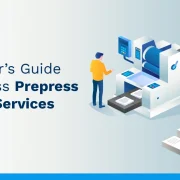Corporate Training refers to the systematic process of enhancing employees’ skills, knowledge, and competencies to improve performance and contribute to organizational goals. Effective corporate training programs, such as those offered by Hurix Digital, focus on bridging skill gaps, fostering leadership development, and ensuring employees remain up-to-date with industry best practices, ultimately driving innovation and growth within the company. Learn more about how custom corporate training solutions can benefit your organization.
What is Corporate Training?
Corporate training is a structured and systematic process designed to enhance the knowledge, skills, and abilities of employees within an organization. It aims to improve individual performance, team effectiveness, and ultimately, overall organizational productivity. This form of professional development encompasses a wide range of learning activities, tailored to meet specific business needs and goals.
Unlike general education, corporate training is directly linked to job-related tasks and competencies. Programs often focus on areas such as leadership development, sales techniques, customer service, technical skills, compliance, and software proficiency. The training can be delivered through various methods, including:
- Instructor-led workshops
- Online courses (eLearning)
- On-the-job training
- Mentorship programs
- Simulations and role-playing exercises
- Virtual Reality (VR) Training
Effective corporate training is crucial for organizations to stay competitive, adapt to changing market demands, and cultivate a skilled and engaged workforce. By investing in employee development, companies can improve employee retention, boost innovation, and achieve greater profitability. It’s a continuous process of learning and improvement, essential for long-term success.
Why is Corporate Training Important?
Corporate training is a vital investment for any organization seeking to thrive in today’s dynamic business landscape. Its importance stems from its direct impact on employee performance, productivity, and ultimately, the company’s bottom line. Well-designed corporate training programs bridge skill gaps, ensuring employees possess the knowledge and abilities necessary to excel in their roles.
Improved employee performance translates directly into increased efficiency and productivity. Trained employees are more confident, make fewer errors, and require less supervision, freeing up management to focus on strategic initiatives. Furthermore, corporate training fosters a culture of continuous learning and development, boosting employee morale and engagement. Employees who feel valued and invested in are more likely to be motivated, loyal, and committed to the organization’s success.
Beyond individual performance, corporate training ensures consistency across the organization. It standardizes processes, promotes best practices, and ensures all employees are aligned with the company’s goals and values. This consistency is particularly crucial in industries with strict regulatory requirements or high customer expectations. Effective training also equips employees to adapt to changing market conditions and technological advancements, allowing the company to remain competitive and innovative. In conclusion, corporate training is not merely an expense; it is a strategic imperative for building a skilled, engaged, and adaptable workforce capable of driving organizational success.
How Does Corporate Training Work?
Corporate training is a structured system designed to enhance employee skills, knowledge, and performance. It works by aligning learning initiatives with organizational goals to drive business outcomes.
The process typically begins with a needs assessment. This involves identifying skill gaps within the workforce and determining training priorities based on strategic objectives. Following the assessment, training programs are developed, incorporating various learning methodologies such as instructor-led training, e-learning modules, workshops, and simulations. These programs are tailored to address specific skills gaps and cater to diverse learning styles.
Training delivery is a key component. Companies choose the most effective format based on factors like cost, accessibility, and the nature of the content. Online platforms, in-person sessions, or blended learning approaches are common. Post-training, assessment methods like quizzes, projects, and performance evaluations are used to measure the effectiveness of the training and track progress.
Crucially, effective corporate training includes ongoing reinforcement and support. This ensures that learned skills are applied on the job and that employees receive continuous development opportunities. Regular evaluation and feedback loops are essential to refine training programs and maximize their impact on employee performance and organizational success.
Examples of Corporate Training in Leading Brands
Corporate training is vital for organizations seeking a competitive edge. Leading brands recognize this and leverage training to enhance employee skills, boost productivity, and foster a culture of continuous learning. Here are some examples:
Google: Innovation & Leadership Development. Google is renowned for its innovative culture. Their corporate training programs heavily emphasize fostering creativity and developing future leaders. They utilize internal programs like “Search Inside Yourself” to cultivate mindfulness and emotional intelligence among employees, which boosts collaboration and performance. They invest heavily in technical skills training, ensuring their workforce stays at the forefront of technological advancements.
Amazon: Customer Obsession & Technical Proficiency. Amazon’s training focuses intensely on its core value: customer obsession. They have programs designed to equip employees with the skills to deliver exceptional customer service. Furthermore, given its vast technology infrastructure, Amazon offers comprehensive technical training, from cloud computing certifications to coding bootcamps, ensuring employees can manage and innovate within their complex systems.
IBM: Reskilling & Digital Transformation. Recognizing the need for constant adaptation, IBM invests heavily in reskilling programs. Their “Skills Gateway” provides employees access to a wide range of courses, enabling them to acquire new skills and adapt to the evolving digital landscape. This focus on continuous learning allows IBM to stay competitive in the ever-changing technology sector.
Procter & Gamble (P&G): Brand Management & Leadership. P&G is known for its rigorous training in brand management. Their programs provide employees with a deep understanding of marketing principles, consumer behavior, and product development. They invest in leadership training, cultivating strong managers who can effectively lead diverse teams and drive business growth.
These examples demonstrate that leading brands view corporate training not as an expense but as a strategic investment in their employees’ and the company’s future. By tailoring training programs to their specific needs and values, they empower their workforce to excel and drive organizational success.
Key Benefits of Corporate Training
Corporate training, a structured approach to enhancing employee skills and knowledge, offers a multitude of benefits that contribute to organizational success. Investing in employee development through well-designed training programs leads to a more skilled, engaged, and productive workforce.
Improved Employee Performance: Targeted training directly addresses skill gaps, enabling employees to perform their jobs more effectively and efficiently. This leads to higher quality work and increased output.
Increased Employee Engagement and Retention: Employees who feel valued and supported through learning opportunities are more likely to be engaged and committed to their organization. Corporate training demonstrates an investment in their growth, fostering loyalty and reducing turnover.
Enhanced Skill Sets and Knowledge: Training programs provide employees with the latest industry knowledge and essential skills, keeping them competitive and adaptable to evolving business needs. This ensures the organization remains at the forefront of innovation.
Improved Productivity and Efficiency: By streamlining processes and equipping employees with better tools and techniques, corporate training enhances overall productivity and operational efficiency, reducing errors and saving time.
Boosted Innovation and Creativity: Training can stimulate creativity and foster a culture of innovation by exposing employees to new ideas and approaches, leading to the development of innovative solutions and improved problem-solving abilities.
Better Compliance and Risk Management: Compliance training ensures employees are aware of and adhere to legal and ethical standards, minimizing risks and protecting the organization from potential liabilities.
Stronger Company Culture: Corporate training fosters a shared understanding of company values and goals, contributing to a more cohesive and collaborative work environment.
Common Misconceptions Around Corporate Training
Corporate training, while a valuable investment, is often surrounded by misconceptions that hinder its effectiveness. Understanding these myths is crucial for maximizing its impact.
One common misconception is that corporate training is a one-time fix. Many believe a single workshop will magically transform employee performance. In reality, training is an ongoing process requiring reinforcement, application, and adaptation to evolving business needs. Sustained learning and development initiatives are far more impactful.
Another myth is that training is solely for new employees or those underperforming. Effective corporate training extends to all levels, offering opportunities for skill enhancement, leadership development, and staying current with industry trends. Investing in top performers ensures continuous growth and innovation.
A frequent misconception is that all training is created equal. Generic, off-the-shelf programs often fail to address specific organizational challenges and employee needs. Customized training, tailored to the company culture and individual skill gaps, yields significantly better results.
Many also believe that training is expensive and provides little ROI. While training incurs costs, the benefits – increased productivity, reduced errors, improved employee retention, and enhanced innovation – far outweigh the expenses when strategically designed and implemented. Measuring training effectiveness is key to demonstrating its value.
Finally, some assume training is only about acquiring new skills. While skills development is important, effective corporate training also focuses on behavioral changes, improved communication, and fostering a culture of continuous learning. This holistic approach drives meaningful and lasting impact.




